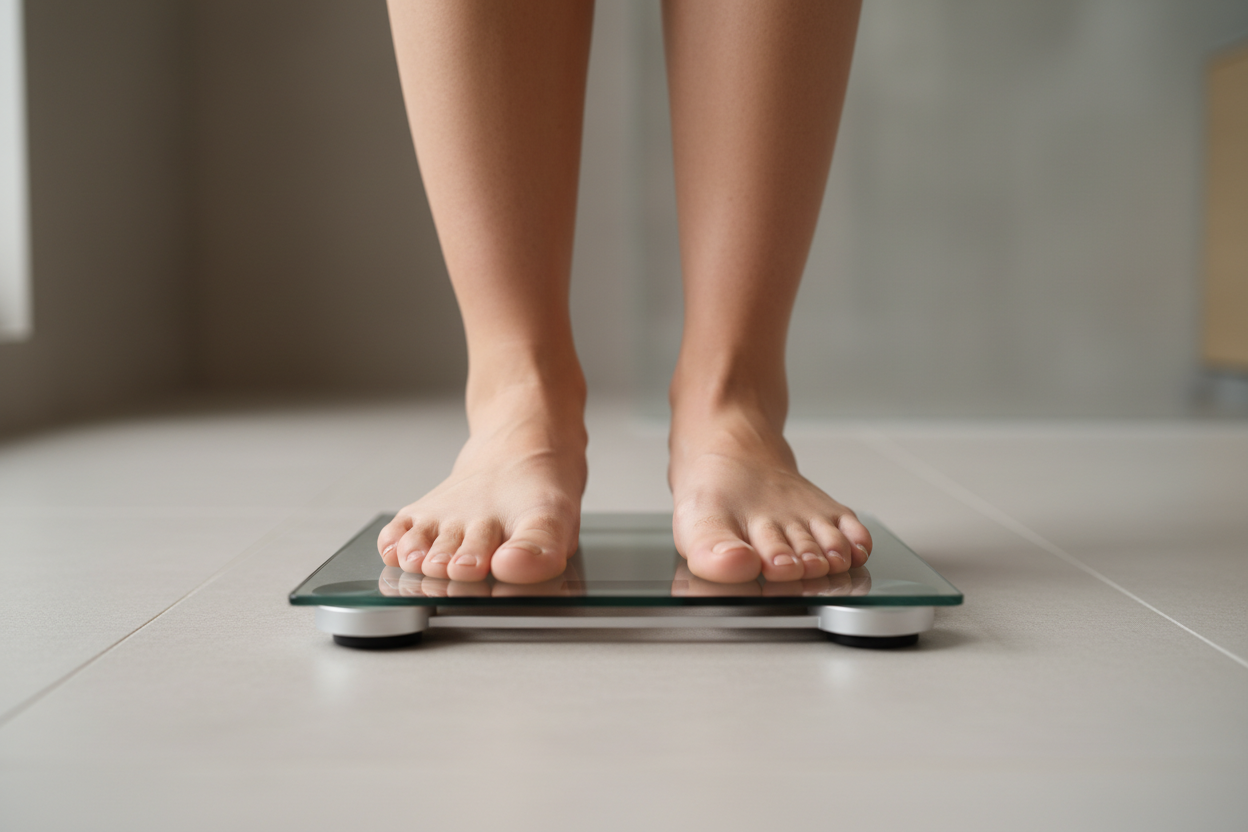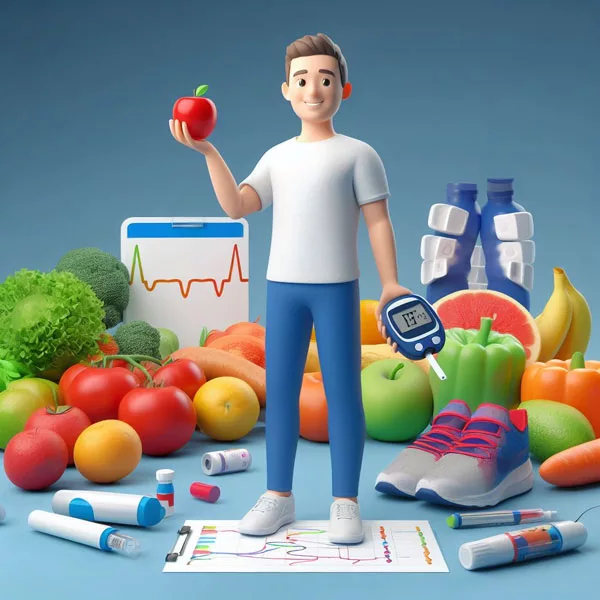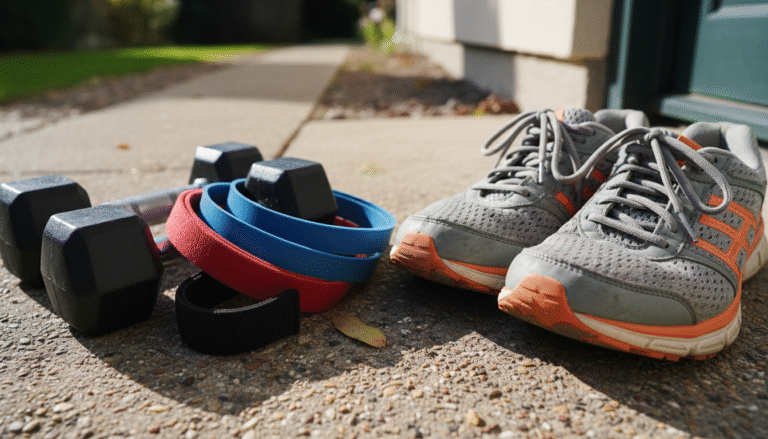What Is Healthy Weight Loss? The Real Deal (No Gimmicks, No Guilt)
Learn what is healthy weight loss, how to lose weight safely and sustainably, and how to avoid crash diets while actually enjoying your life.
Let me guess: you’ve probably Googled “what is healthy weight loss” at 2 a.m. while eating leftover pizza, right? Or maybe that was technically “second dinner.” Either way, you’re here because you want the truth about losing weight without wrecking your metabolism, your sanity, or your social life. And honestly? I love that you’re asking this instead of signing up for another “lose 20 pounds in 10 days” challenge that mostly delivers disappointment and a very irritable version of you.
If we keep it simple, what is healthy weight loss? It’s losing around 1–2 pounds per week through realistic, sustainable changes in how you eat, move, sleep, and manage stress—without starving yourself, obsessing over every bite, or turning your life into one long “I’m on a diet” sentence.
But if that one-line answer fixed everything, you wouldn’t be here. So let’s dig in: what is healthy weight loss in real life, why does it matter so much, and how do you actually do it in a way that feels human and sustainable instead of exhausting and miserable?
Why Everyone Gets Weight Loss Wrong (Including Past Me)
When I think about all the diets I’ve seen people try, it starts to sound like a strange buffet of suffering: the cabbage soup diet, keto done without a clue, juice cleanses that cost more than a weekend trip, and “detox teas” that mostly just make you hate your bathroom.
And for a while, most of them “work.” The scale drops quickly, your clothes feel looser, people start complimenting you. But behind the scenes? You’re hungry, tired, maybe a little snappy, and secretly counting down the days until you can eat like a normal human again.
Then it happens: the weight comes back. Sometimes more than before. And it’s easy to blame yourself—“I just don’t have discipline”—when the real problem is the approach.
We’ve been sold this idea that healthy weight loss means:
- Faster is better
- Suffering equals success
- Your body is a machine that just needs the right “hack”
But your body isn’t a machine; it’s more like a suspicious roommate. The second it senses that food is suddenly scarce, it doesn’t say, “Cool, let’s get shredded.” It says, “We’re under attack. Save everything.”
There’s a well-known study in the journal Obesity that followed contestants from “The Biggest Loser.” Six years later, most had regained a lot of the weight—and their metabolisms were still slower than expected, burning about 500 fewer calories per day than someone their size “should.” That’s not laziness. That’s your biology doing its job: protecting you from what it thinks is starvation.
So if you’ve ever wondered, “Why is this so hard?” the honest answer is: because your body is trying to keep you alive. That’s not a flaw; it’s literally the survival system that got humans this far.
So What Is Healthy Weight Loss, Really?
Let’s go back to the main question: what is healthy weight loss when we strip away the marketing, the detox kits, and the “before and after” photos?
Healthy weight loss is:
- A moderate, sustainable calorie deficit (not slashing your intake in half)
- Enough protein, fiber, and healthy fats to keep you full and nourished
- Movement that builds muscle and supports your heart, not just burns calories
- Habits you can imagine keeping for years, not just “until the wedding”

The CDC lands on that 1–2 pounds per week guideline for a reason. It’s not as flashy as “Drop a dress size in 5 days,” but it’s the pace where you’re mostly losing fat, not muscle, and where your metabolism doesn’t go into full “I live in a cave now” mode.
When I stopped treating weight loss like a sprint and started treating it like building a lifestyle, something shifted. I stopped obsessing over every meal. I wasn’t dragging myself through workouts powered only by caffeine and regret. The weight came off more slowly—but it stayed off. And I actually felt like a human being the whole time.
The Math That Actually Matters (Without Making Your Head Hurt)
I promise, no scary equations. But understanding the basics really helps you see what healthy weight loss looks like.
To lose about one pound of fat, you need a total deficit of roughly 3,500 calories. Spread over a week, that’s:
- About 500 calories per day for 1 pound per week
- About 1,000 calories per day for 2 pounds per week
Now, that doesn’t mean you should just eat 1,000 fewer calories and suffer. The smarter approach is a blend:
- Eat a bit less
- Move a bit more
Maybe you cut 300 calories from your daily intake (like skipping sugary drinks and oversized snacks) and burn another 200 through walking or workouts. That’s still 500 per day—but way less miserable than trying to white-knuckle your way through a 1,000-calorie crash diet.
And here’s where it gets interesting: technically, a calorie is a calorie. But in your body, not all calories act the same.
A 2019 study in Cell Metabolism had people eat either ultra-processed foods or minimally processed whole foods. The meals were matched for calories, sugar, fat, fiber, and protein. On paper, they were “the same.” In real life? The ultra-processed group ate about 500 more calories per day and gained weight, while the whole-food group naturally ate less and lost weight.
So yes, energy balance matters. But if you’re wondering what is healthy weight loss in practice, it’s not just “eat less.” It’s “eat better, so your body and brain naturally help you out.”
The Building Blocks of Healthy Weight Loss
Let’s get out of theory and into your actual day. What is healthy weight loss when you’re staring into your fridge at 6 p.m. wondering what to eat?
It comes down to a few simple pillars: food, movement, mindset, sleep, and stress. Nothing here is revolutionary—which is kind of the point. The basics work.
Nutrition That Doesn’t Make You Miserable
If your plan is “chicken, broccoli, and sadness,” it’s going to be a very short plan.
A more realistic way to approach what is healthy weight loss nutritionally looks like this:
1. Prioritize protein.
Aim for roughly 0.7–1 gram of protein per pound of body weight (or per pound of goal weight if you’re starting higher). Protein:
- Keeps you full longer
- Helps preserve muscle while you’re in a calorie deficit
- Burns more calories during digestion than carbs or fat
When I intentionally bumped my protein, my 3 p.m. crash basically disappeared. I wasn’t staring at the office snacks or raiding the pantry with that “must eat everything” feeling. I just… felt steady. Not glamorous, but incredibly helpful.
2. Fill up on fiber.
Vegetables, fruits, whole grains, beans, and lentils are your friends here. Most people only get around 15 grams of fiber a day; the sweet spot is more like 25–35 grams.
More fiber means:
- Better digestion
- More stable blood sugar
- Feeling full on fewer calories
So instead of thinking, “What can I cut?” start asking, “Where can I add fiber and protein?” It’s a much less depressing game.
3. Don’t fear fat.
Healthy fats—like avocados, olive oil, nuts, seeds, and fatty fish—help with:
- Hormone production
- Brain function
- Nutrient absorption
Yes, they’re calorie-dense, so portion still matters. But going back to fat-free everything (hello, 1990s) is not the move if you’re looking for healthy weight loss. You’ll just end up hungry and cranky.
4. Stay hydrated.
I used to think “drink more water” was just generic wellness wallpaper advice, until I saw how often I was confusing thirst with hunger. There’s a simple trick from studies in Obesity: people who drank about 16 ounces of water before meals lost significantly more weight over 12 weeks than those who didn’t. It’s such a small, doable habit that stacks in your favor.

Movement That Actually Feels Good
Here’s a radical thought: what if movement wasn’t punishment for what you ate, but something you do because it feels good and makes your life better?
If you’re asking what is healthy weight loss from a movement perspective, here’s the combo that works beautifully:
Strength training: the unsung hero.
I used to think weight loss = cardio. Full stop. But building and preserving muscle is one of the most important parts of healthy weight loss.
Muscle:
- Burns more calories at rest than fat
- Helps you keep your metabolism from tanking
- Makes you stronger, more capable, and honestly, more confident
Aim for 2–3 strength sessions a week that hit all major muscle groups. You don’t need to live in the gym or become a bodybuilder. Basic compound movements and progressive overload go a long way.
And no, you won’t “get bulky” by accident. That’s like worrying you’ll wake up as a concert pianist because you bought a keyboard.

Cardio for health (and mood), not just calorie burn.
Cardio absolutely has its place: it supports heart health, improves endurance, and can be a massive stress reliever. The key is: pick something you don’t hate.
If you love running, run. If you don’t, don’t force it. Walking, cycling, dancing, swimming, hiking—they all count. At the end of the day, the best form of cardio is the one you’ll actually stick with.
I tried to make myself a “runner” for years. I bought the shoes, downloaded the apps, hated every second. Once I gave myself permission to hike and lift instead, I suddenly became “consistent.” Funny how that works.
Move more throughout the day.
Formal workouts matter, but so does everything else you do:
- Taking the stairs
- Walking while on calls
- Parking a little farther away
- Getting up from your desk regularly
This everyday movement (NEAT: Non-Exercise Activity Thermogenesis, if you like fancy acronyms) can add up to hundreds of calories burned a day. In the “what is healthy weight loss” equation, it’s one of the quiet superstars.
The Mental Game Nobody Talks About
If weight loss were just about knowing what to do, we’d all be done by now. The “how” is everywhere. It’s the “doing it consistently without losing your mind” part that trips us up.
Honestly, what is healthy weight loss without the mental side? Incomplete.
Ditch the All-or-Nothing Thinking
One of the biggest traps I’ve seen (and fallen into myself) is the “Well, I blew it, might as well go all in” mindset.
- You eat one cookie: “Day’s ruined, might as well finish the box.”
- You miss one workout: “Week’s ruined, I’ll start Monday.”
Psychologists call this the “abstinence violation effect.” I call it the “well, screw it” spiral.
Here’s the reframe that changed everything for me: one choice is just one choice. It’s a data point, not a verdict. Healthy weight loss isn’t about never messing up; it’s about how quickly and kindly you recover.
The first time I genuinely treated a “bad” meal as just… a meal, not the end of the world, it was wildly freeing. I had cake at a birthday, enjoyed it, went back to my usual routine the next day. No spiral, no “I’ll restart next month.” Just life.
Focus on Behaviors, Not Just the Scale
Your weight can swing a few pounds in either direction based on sodium, hormones, carbs, and even how recently you went to the bathroom. If that number is the only thing you track, you’re basically letting a moody roommate run your emotions.
Instead, healthy weight loss focuses more on:
- Did I hit a reasonable protein target today?
- Did I eat some vegetables?
- Did I move my body in some way?
- Did I get decent sleep?
- Did I handle stress in a way that didn’t involve inhaling a family-size bag of chips?
When I started tracking habits instead of just weight, everything made more sense. Even on weeks where the scale didn’t move, I could see: “Okay, I worked out four times, I slept better, and my meals were 80% on point.” That’s progress, whether or not the scale feels like cooperating that day.
The Role of Sleep and Stress (Yes, Really)
I used to put sleep and stress in the “nice to fix someday” category. Then I realized they were quietly messing with my results.
Sleep: The Secret Weapon
If you’re trying to figure out what is healthy weight loss and you’re consistently getting 4–5 hours of sleep, your body is basically playing on hard mode.
When you’re sleep-deprived:
- Ghrelin (the “I’m hungry” hormone) goes up
- Leptin (the “I’m full” hormone) goes down
- Cravings—for high-calorie, high-sugar foods—go way up
There’s a study in the Annals of Internal Medicine that showed when dieters slept enough, over half the weight they lost was from fat. When they were sleep-deprived, only about a quarter of the loss was fat—the rest was muscle and water.
So yes, going to bed earlier is one of the most underrated weight loss strategies out there. It’s not lazy. It’s strategic.

Stress: The Silent Saboteur
Chronic stress pumps out cortisol, which (among other things):
- Increases appetite
- Can promote fat storage, especially around your midsection
- Makes emotional eating way more tempting
I noticed a pattern in my own life: during the most stressful stretches at work, I’d gain or stall, even when the food looked “the same” on paper. My body was basically on high alert, trying to protect me.
Healthy weight loss doesn’t mean eliminating stress (if you figure that out, please let me know). It means finding ways to regularly dial it down a notch:
- Walks without your phone
- Short meditation or breathing exercises
- Time outside
- Lifting weights or doing yoga
- Talking stuff out instead of bottling it up
It doesn’t have to be perfect. It just has to be intentional.
What Healthy Weight Loss Isn’t
Sometimes it’s easier to define what is healthy weight loss by clearing out what it is not.
- It’s not 1,200 calories a day for everyone.
For most adults, especially if you’re active, 1,200 calories is basically a famine. It might make the scale move fast, but your metabolism and mood won’t thank you. - It’s not cutting out entire food groups (unless medically necessary).
Carbs aren’t evil. Fats aren’t evil. Even sugar isn’t “evil.” The dose and the context matter. Unless your doctor has told you otherwise, balance beats restriction. - It’s not magic pills or detox teas.
If there really were a safe, effective pill that solved weight for everyone, it wouldn’t be hiding in online ads. The weight loss supplement industry is full of overpromises and under-tested products. Be careful. - It’s not punishment.
Exercise isn’t a court sentence for eating dessert. Food isn’t a bribe to earn your own basic care. In a truly healthy weight loss journey, you’re learning to work with your body, not fight it.
Creating Your Healthy Weight Loss Plan
So how do you actually design a plan around what is healthy weight loss instead of just hoping for the best?
Here’s a simple framework you can adapt.
Step 1: Calculate a Starting Point
Use an online calculator to estimate your Total Daily Energy Expenditure (TDEE)—basically how many calories you burn on an average day. Then:
- Subtract ~300–500 calories to set a manageable deficit
Don’t treat this number like it’s carved in stone. Think of it as a starting hypothesis. Your body’s feedback over the next few weeks is the real data.
Step 2: Set Up Your Nutrition
Once you know your approximate calories, build your meals around:
- Protein in every meal
- Plenty of fiber-rich plants
- Some healthy fats
- Mostly whole or minimally processed foods
I like the 80/20 rule: 80% of what I eat is nutrient-dense and aligned with my goals; 20% is flexible. That’s how you answer “what is healthy weight loss” without also signing up for “what is never eating pizza again.”
Meal prep doesn’t have to mean 7 identical containers of chicken and rice. It can be as simple as:
- Cooking a batch of protein
- Chopping some veggies
- Having quick, healthy options visible and ready
You’re just making the healthy choice the easy choice.
Step 3: Design Your Movement Plan
A basic, effective template for healthy weight loss:
- 2–3 strength training sessions per week
- 150 minutes of moderate cardio per week (or 75 minutes vigorous)
- Daily movement (walks, steps, general activity)
If that sounds like a lot, start smaller. Even 10–15 minutes a day of something is better than waiting for the “perfect” time to do a full routine. Consistency beats intensity, every time.
I treat my workouts like appointments now. They go in my calendar with reminders. It’s amazing how much more often they happen when they’re scheduled like something that matters.
Step 4: Track Progress (Without Obsessing)
Here’s a balanced way to monitor how your healthy weight loss is going:
- Weigh yourself once a week under similar conditions (same day, time, clothing)
- Take measurements or photos every few weeks
- Track habits: workouts, steps, water, sleep, protein
The scale is just one data point. How your clothes fit, how strong you feel, your energy levels, and even your mood are all part of the progress picture.
Step 5: Adjust When Needed
If after 2–3 weeks:
- You’re exhausted, hungry all the time, and miserable → deficit may be too big.
- Absolutely nothing is changing (and you’re being honest about habits) → you may need a slightly larger deficit or a bit more movement.
Sometimes, especially after long periods of dieting, your body benefits from a short “diet break”—a week or two at maintenance calories with solid food quality—before you continue. That’s also part of what is healthy weight loss: knowing you’re allowed to ease off the gas instead of flooring it forever.
The Long Game: Maintenance Matters More Than Loss
Here’s the part most people skip: losing the weight is one thing; keeping it off is another game entirely.
Research suggests a large percentage of people who lose significant weight regain it over time—not because they’re weak, but because they go back to the old habits that created the weight in the first place.
Healthy weight loss doesn’t really have a finish line. That sounds depressing at first, but it’s actually freeing. You’re not “on” or “off” a diet. You’re building a lifestyle that:
- Lets you enjoy food
- Keeps you healthy and energized
- Supports the weight range where you feel and function best
I’ve maintained my own loss not because I discovered some magical maintenance hack, but because the way I lost the weight is pretty close to how I live now:
- Mostly whole foods, some fun foods
- Regular movement I actually like
- Reasonable sleep most nights
- Ongoing work on stress and mindset
It stopped being a “program” and just became “my normal.”
When to Get Professional Help
There are times when the most “healthy” thing you can do for weight loss is ask for support.
It may be wise to talk to a professional if:
- You have a lot of weight to lose (say, 50+ pounds)
- You’re dealing with conditions like diabetes, PCOS, or heart disease
- You have a history of disordered eating or body image struggles
- You’ve tried many times and feel stuck or defeated
- You’re considering medication or surgery
A registered dietitian can tailor a plan to your body and your preferences. A personal trainer can build a routine that matches your level and prevents injury. A therapist can help with the emotional side, which is often the missing piece.
There’s zero shame in that. If anything, it’s one of the smartest things you can do.
The Bottom Line: What Is Healthy Weight Loss?
So, after all this, what is healthy weight loss?
Healthy weight loss is:
- Losing about 1–2 pounds per week on average
- Creating a moderate calorie deficit without starving
- Eating enough protein, fiber, and healthy fats
- Moving your body regularly, with both strength and cardio
- Respecting sleep and managing stress
- Building habits you can see yourself living with long-term
It’s slower than the crash diets. It’s less dramatic than the before-and-after stories on social media. It requires patience, consistency, and a good dose of self-compassion.
But it also:
- Protects your metabolism
- Supports your mental health
- Allows you to have a life while you’re losing weight
- Gives you the tools to keep the weight off once it’s gone
Some days you’ll nail it. Other days you’ll eat dessert for dinner and forget what a vegetable looks like. That’s okay. Healthy weight loss isn’t about perfection—it’s about direction.
You don’t need to wait for Monday, the first of the month, or a new year. You can start with one small step today:
- Add a serving of protein to your next meal
- Go for a 10-minute walk
- Go to bed 30 minutes earlier
- Drink a glass of water before you eat
Stack those little things over time and you’ll start to see why real, healthy weight loss doesn’t feel like punishment. It feels like finally working with your body instead of against it.
And if you’re wondering whether it’s worth the effort? Speaking as someone who’s been on the “diet hamster wheel” and finally stepped off: yes. A hundred times yes.
Now, if you’ll excuse me, I’ve got a workout on the calendar—and tacos planned for dinner afterward. Because balance isn’t cheating on your goals; it’s how you make them livable.







